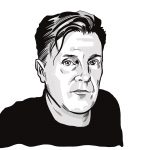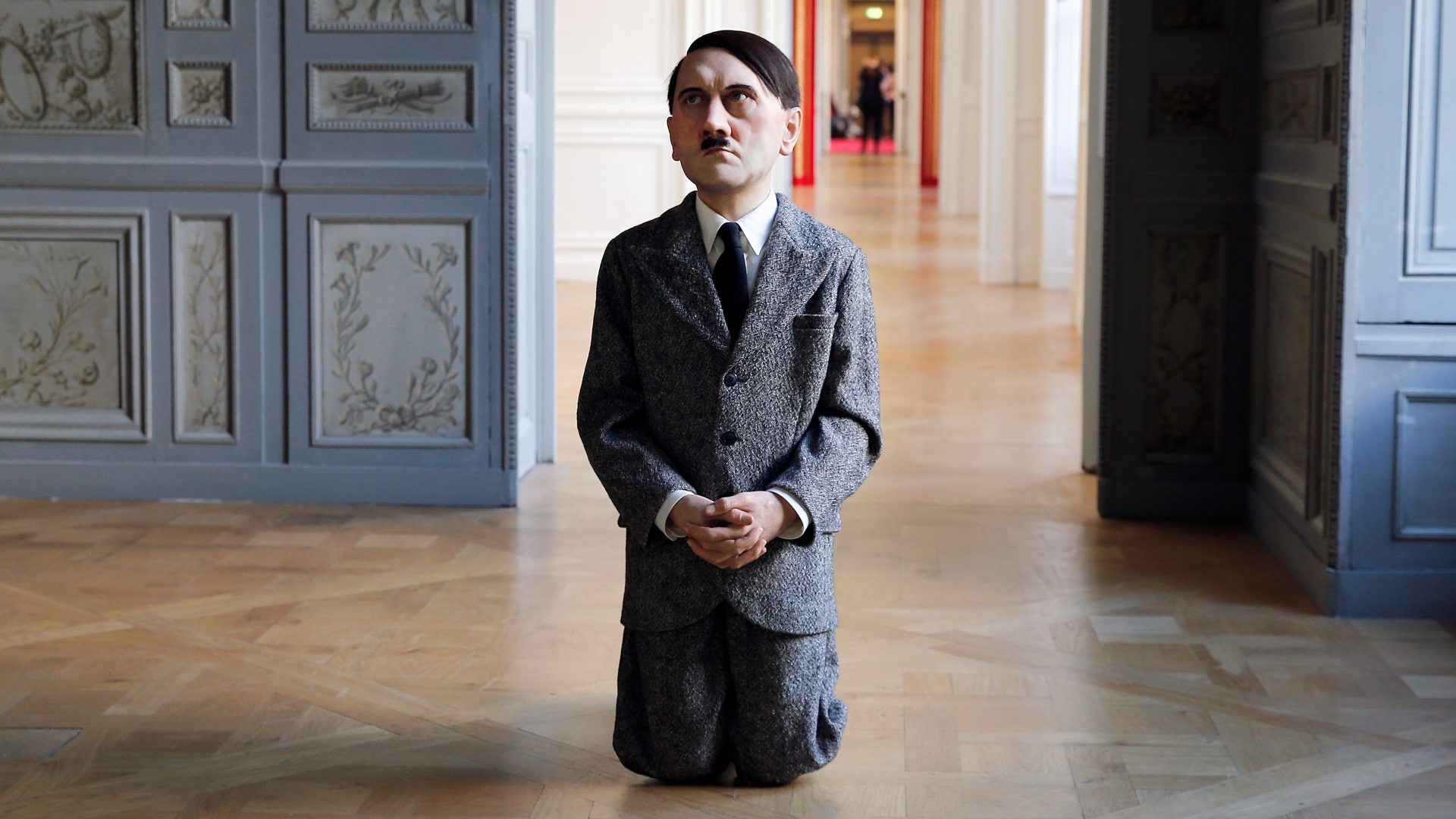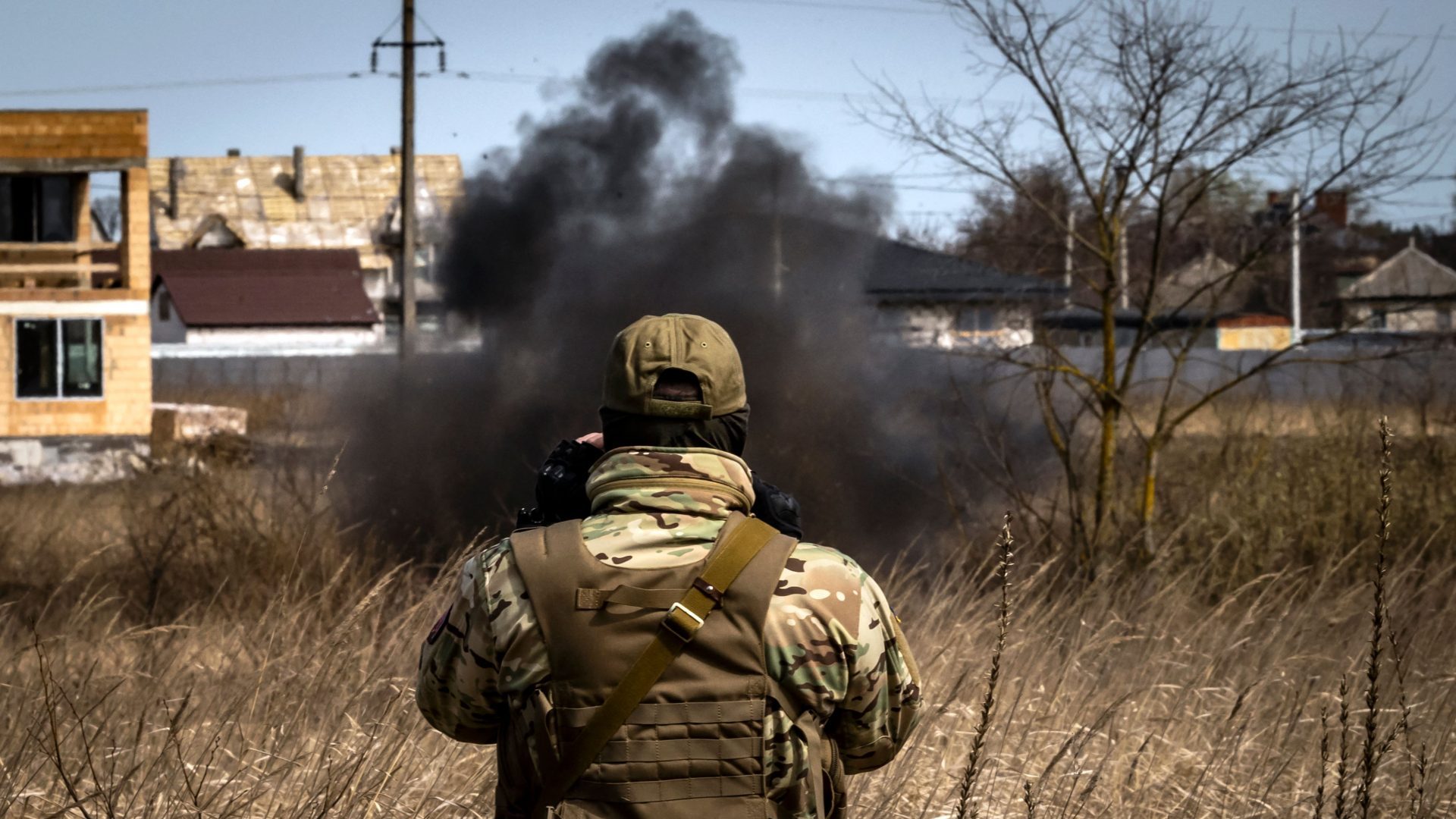Adolf Hitler is back in Vienna. This is the city where, as a young man, he twice failed to gain entry to the Academy of Fine Arts. Almost 30 years later, after the Anschluss in 1938, he entered triumphantly in an open-topped car surrounded by crowds of Viennese supporters waving swastika flags and chanting “sieg heil”. This time he’s here in the form of Him, Maurizio Cattelan’s boy-sized semi-realistic wax figure of a kneeling Hitler looking upwards, apparently seeking penitence.
Cattelan is the Italian artist who recently caused a sensation with his work Comedian – a banana fixed to the gallery wall with duct tape, an echo of an earlier installation in which he had taped his gallerist to a wall in Milan. Another of his pieces, a sculpture of Pope John Paul ll struck by a meteorite, La Nona Ora, also ruffled some feathers. Him is on display in Vienna’s Jewish Museum as part of a tribute to the Jewish-American industrialist, art collector and philanthropist Stefan Edlis, who as a teenager, together with his mother and two siblings, fled Vienna in 1941, reaching safety in New York. Edlis, who died in 2019 aged 94, owned Him and kept the statue in the library of his Chicago apartment. This Him is in fact one of three copies, another of which has been owned by the daughter of an Auschwitz survivor.
Any depiction of Hitler is controversial, capable of stirring sorrow, anger, and, sadly, can still become a focus for antisemitism. So why put a statue of him in a Jewish museum, and why would Jewish collectors, of all people, want to own one? The answer is in part, I think, that good works of art make us reflect deeply, without settling on a simple story. They can be catalysts for more open reflection. We need historical, psychological, and philosophical analyses of atrocities. But we also need art that opens us up to different ways of thinking about them. It’s too easy to look away. Against opposition, the Chief Rabbi of Poland supported displaying Him on the site of the Warsaw Ghetto in 2012 because of its educational value. But the kind of education art can give is rarely factual.
With Him, Cattelan wanted to confront taboos surrounding Hitler. The title suggests someone we don’t even mention by name. Cattelan thought about destroying the statue as he felt he had perhaps gone too far this time. Hitler is so much the embodiment and symbol of evil. But he didn’t, and this disquieting combination of child and adult invites us to think of the child that became the man, without fixing on a single reductive explanation.
Him invites us to think about how Hitler grew up to be so indifferent to the suffering he caused. What happened to his humanity? Is this a failure of empathy? Many are asking similar questions today about Vladimir Putin, and comparisons between the two no longer seem quite so outlandish. The evil consequences of Putin’s ambitions are not yet, and let’s hope never will be, on the scale of Hitler’s, but already with thousands dead, many tortured and raped, and more than five million refugees on the move from Ukraine, some comparisons are pertinent. Psychological explanations about early childhood experiences are tempting – Hitler’s cruel and domineering father and his relationship with his mother; Putin’s difficult childhood growing up as a tough street kid in Leningrad. And both had a narrative of a lost empire snatched away from their country. But this retrospective interpretation of causes leaves much uncertainty and is highly speculative. It feels too easy.
In the baroque Judenplatz square in Vienna, an area where in the past many Jews once lived, stands a very different, more sombre artwork made for some of Hitler’s victims: Rachel Whiteread’s memorial to 65,000 Austrian Jews who died in the Shoah. It is a large concrete block partly composed of the traces of inward-facing books whose spines we can’t see, and whose pages can’t be read. It evokes absence and loss. While Cattelan’s Him invites us to reflect on the chief perpetrator, Whiteread’s memorial is focused on the unknowable people who perished and whose experience is shut off from us like these closed books.
Cattelan has declared that the duty of art is to ask questions, and that if you want a clearer answer, you are in the wrong place. That seems right. The point of such art is not to explain the past, but to change us.



